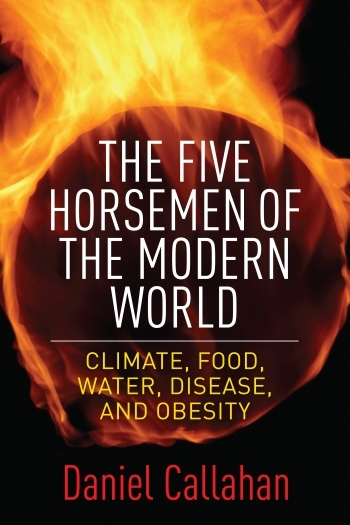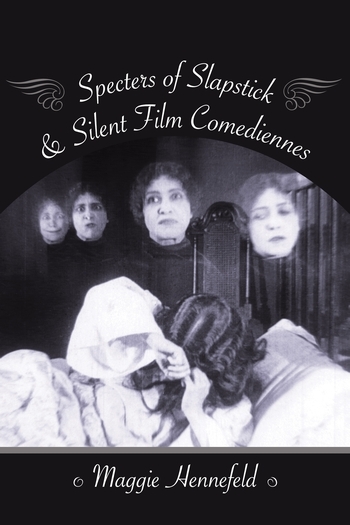Fat: To Be Or Not To Be? — Daniel Callahan

“There is a public health change that needs to be made. If people by the hundreds of thousands are dying from obesity, that tips my judgment toward broadcasting it the way it is: obesity is dangerous, it can kill and cripple you. If saying that bluntly in order to deter those not yet obese offends the already obese, that is inadvertent and a price worth paying.”—Daniel Callahan
The following post is by Daniel Callahan, author of The Five Horsemen of the Modern World: Climate, Food, Water, Disease, and Obesity:
Obesity is everywhere. Many of us have obese friends or coworkers. If you, yourself are obese, there is a good chance you have tried to lose weight. It is no less likely that you have found it difficult and aggravating to do so, and exceedingly frustrating when the pounds come back again. You are not alone. Obesity is a world-wide scourge, and one that has grown steadily worse over decades. Of all my five horsemen, it seems to be the most intractable.
An international study reported in April, 2015, in the British medical journal, The Lancet—encompassing 19.2 million participants—came to a stark conclusion: no progress of any significant kind can be found in stemming obesity’s increase, now well into its 40th year. Global obesity has more than doubled since 1980. Some 38 percent of Americans were obese in 2013 and 2014, up from 35 percent in 2011 and 2012—and still rising. At least 2.8 million people already die each year from overweight or obesity, and the US is the most afflicted. While global warming has gained much more attention than obesity, the World Health Organization (WHO) projects an average of 250,000 deaths from obesity per year between 2030 and 2050.
How is it possible to get nowhere with a problem well recognized, amply studied, and right before our eyes? The first policy step years ago seemed the most obvious: education. If people understand how dangerous obesity is—as was happening with smoking—and how possible it is to make some dietary and exercise changes, they can lose weight. Weight loss programs and education campaigns blossomed, for both adults and children, in schools, community centers, and the media. Weight Watchers, now operating in 30 countries, emerged in 1963 as the leader of a business rush to a massive ever-growing market. On the medical side, it was early on believed that there must be a genetic explanation of obesity. An oft-cited figure is that 60% is a likely proportion of the cause, but that insight has not led to treatments. A few weight-reducing drugs are on the market, expensive bariatric surgery is increasing, but is not the solution with the number of the obese in the millions. One of the most disturbing findings is that once a person is obese, even if they can lose weight for a time, only 5-10 percent can keep it off.
Social science research opened another door, in part because of a puzzle that cast doubt on the genetic pathway. Why was it that in the 1970s there was a great surge in obesity? Genetics could not explain that sudden jump. There had to be some social and cultural issues at play, a perspective caught by the idea of an “obesogenic” society, one that fosters and nurtured obesity. Its key ingredients are just those features of affluent cultures that give us cheap and unhealthy foods, jobs that have us sit and look at screens all day, makes regular exercise a demanding discipline to be added to busy lives, and that, especially if one is poor, is all but inescapable. The food and beverage industries foster obesogenic societies. They resist efforts to tax their products, to dampen their sales, to regulate their consumption, and to stop selling those that are hazardous.
Perhaps worst of all, there is a convergence of right and left on one crucial value, that of resistance to what we do either with our bodies or to them: leave us alone. Nor is this response limited to the United States. Very few countries (e.g., Japan, Hungary, Mexico) have accepted government regulation of what people eat and drink. Much of what we know about obesogenic societies comes from the social science research, most of it of great value. But just as global warming researchers settled an argument among themselves about the wisdom of using fear as a public stimulus, deciding in its favor, with obesity social scientists have been stymied. If there is any overriding danger in anti-obesity efforts , they uniformly hold, it is that of stigmatizing the obese, punishing them for something they can’t help.
But that leaves the researchers with a dilemma yet to be resolved, especially when the greatest future need is for prevention. They strongly support the use of the language of “choice” in public health programs (“making healthy choices” about what we eat and drink), and in urging regular exercise they affirm another kind of personal option. That language contradicts the supposed iron grip of obesogenics. The smoking epidemic was brought under considerable control by a combination of invoking its lethal dangers and the shaming of those who smoke. That analogy is flatly rejected for use in controlling obesity. There is good evidence of obesity stigma, but even to say obesity is harmful as a health danger seems to have that result. In effect, even to press those only overweight to avoid obesity will stigmatize those already obese as well—they can hear the implicit judgment : don’t become like us!
There is a public health change that needs to be made. If people by the hundreds of thousands are dying from obesity, that tips my judgment toward broadcasting it the way it is: obesity is dangerous, it can kill and cripple you. If saying that bluntly in order to deter those not yet obese offends the already obese, that is inadvertent and a price worth paying. And there is another trade-off as well: despite opposition, taxation and a strong government hand are the only policy strategies likely to be effective in reducing obesity.
We are left then with one strategy that can anger the obese and their public health protectors, and another disliked by much of the public. Those are the hard ways. All the easier ways have been tried and are wanting. Yet one way or other each of my five horsemen suffer from this kind of syndrome. I think of that trait as a kind of chronic disease of human nature: we too often know what we ought to do but can’t bring ourselves to do it.





